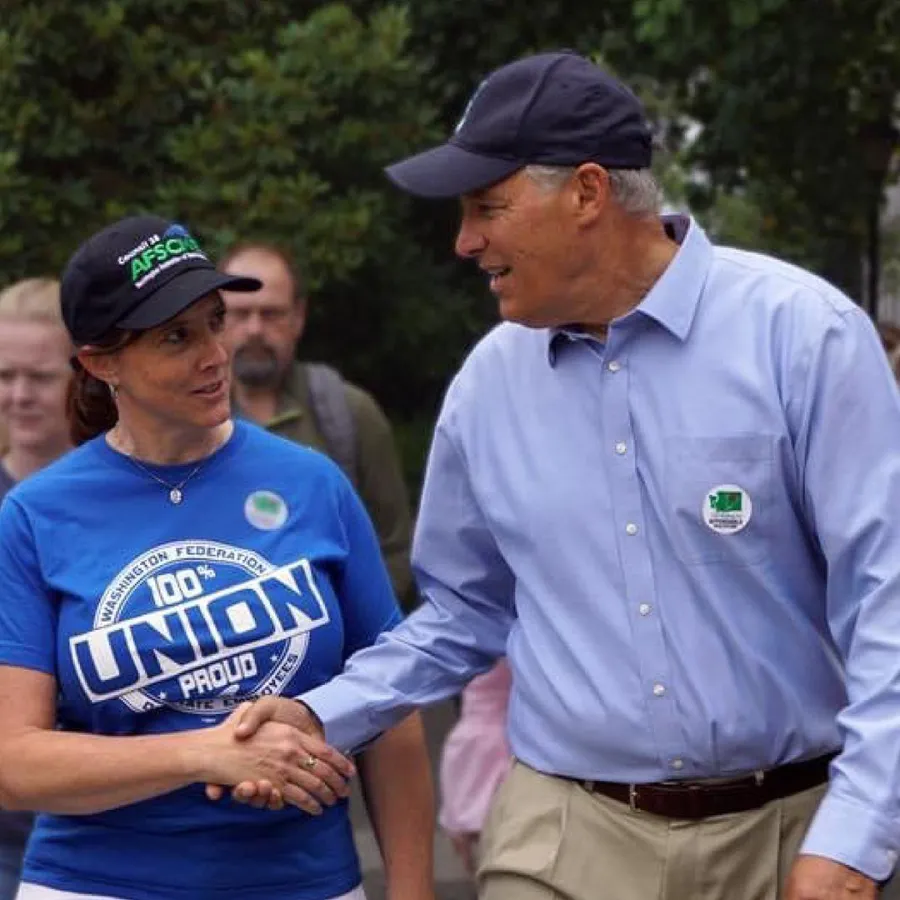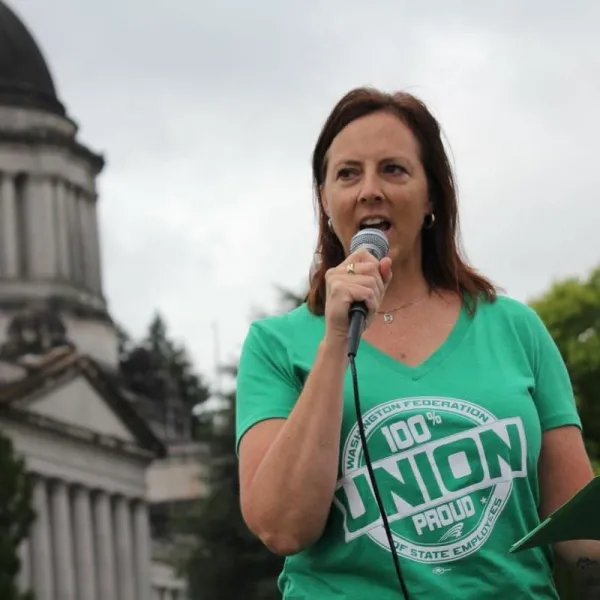Jay Inslee is the Choice for a Bright Future

Governor Jay Inslee has done a lot for state workers.
He has called for and signed dozens of pro-worker bills. He has expanded collective bargaining and the prevailing wage. He has funded our negotiated contracts in his budget every cycle. He has honored a promise not to support the contracting out of our work. He has pledged that so long as he is governor, our pensions will not be at risk.
This commitment to public workers hasn’t just been evident in budget decisions and legislation. The governor has personally intervened on behalf of state employees facing unsafe working conditions. He has lifted the voices of concerned state employees when agency management wouldn’t listen.
Partly, this loyalty comes from his role as chief executive of our state, whose duty is to faithfully execute laws passed by the Legislature. But it’s much more than that.
Jay Inslee believes that worker-friendly policies are the key to sustained economic growth. Over the last eight years, he’s been proven correct.
Coming out of the Great Recession, Governor Inslee rejected the austerity agenda of his predecessor and set Washington on a course for recovery by investing in—not cutting from—working families. He raised the minimum wage, invested in infrastructure, and passed best-in-the-nation paid family leave, giving every Washington worker up to 12 weeks of paid sick time.
He proved that taking care of people isn’t just possible while you grow the economy, it’s actually how you grow the economy.
In my view, this is the lesson of his tenure as governor. It’s a lesson we shouldn’t forget in the midst of a pandemic that’s claimed the lives of 2,200 Washingtonians and a recession that’s projected to gouge a $4 billion hole in the budget.
If we repeat the mistakes made during the Great Recession, it will take longer to reopen the economy, longer to recover from the recession and longer to return to normalcy. These same mistakes are being celebrated and elevated to the level of a campaign platform by Governor Inslee’s opponent, Loren Culp.
Culp has suggested that instead of balancing our state’s upside-down tax system, the most unfair in the country, we should roll the budget back to “2016 and 2017 levels,” which happens to be the same time period our state was in contempt of court over its slow progress in fixing how it paid for basic education.
Culp maintains that we don’t have a revenue problem, but a spending problem—as if, by taking money out of the pockets of our 47,000 members, slashing vital services that residents depend on to get back on their feet, and cutting from the infrastructure our economy is built on, we will save instead of lose money.
Governor Inslee uses data to make decisions, not ideology.
In March, he acted decisively to slow the spread of COVID-19 and made the difficult decision to veto over $200 million in new spending approved by the Legislature, much of which was for programs he had championed.
In June, he rejected widespread calls to convene a special session of the Legislature and pushed back on knee-jerk cuts before the fiscal picture became clear. “A pandemic is no time to propose cuts to things like child care, health care or mental health services,” he argued. This turned out to be exactly the right decision. Since June, the projected budget shortfall has been cut in half.
Austerity agendas aren’t just cruel, they have been tried and failed all across the globe as well as right here in Washington state.
Stimulative agendas that benefit working families and keep money flowing have been proven to work, especially in times of recession.
Budgets are not abstract to me. As a former detention deputy, licensed peace officer, and child protection specialist that investigated child abuse and neglect, I understand who suffers when our services are cut. The stakes are extraordinarily high.
Governor Inslee recognizes the vital role public workers play in the health and safety of our communities, and the role we must play in our recovery. He deserves our vote.
Leanne Kunze serves as the AFSCME Council 28 (WFSE) Executive Director. As head of operations, she leads a dedicated team of more than 100 staff who support 46,000 public service workers across Washington State.

